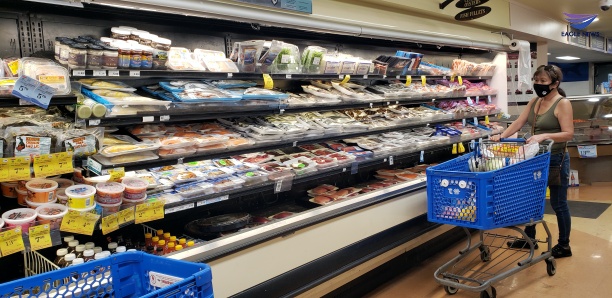
HONOLULU (Eagle News) – Scientists and researchers from the University of Hawaii’s (UH) School of Life Sciences at the Manoa campus have reported that 21% of the seafood sold in the greater Honolulu area are mislabeled.
Kevin Morris, an environmental attorney and graduate of the UH William S. Richardson School of Law, initiated the multi-year project when he was first exposed to the idea of seafood fraud in an undergraduate class focused on seafood supply chains.
“As a former US Coast Guard member who participated in many fishing patrols, I was taken aback by national studies showing the illegal practices I was helping to prevent on the water were continuing all the way to our dinner plates,” Morris said.
Morris later teamed up with Peter Marko, an associate professor in the School of Life Sciences and head of The Marko Lab.
They describe that most mislabeled seafood involves less expensive species sold under the names of more expensive species, suggesting substitutions are motivated by profit. These species substitutions also hinder environmentally-driven consumer choice, allowing overfished and threatened species to reach the marketplace.
Although seafood mislabeling has been documented worldwide, no studies of seafood label accuracy have yet been conducted in Hawaii until recently.
The latest study by UH used mitochondrial DNA sequencing or “barcoding” from 75 samples of fish to detect seafood mislabeling in restaurants, grocery stores, and sushi bars in the greater Honolulu area. Marko said that 21% is a “relatively low rate for a major metropolitan area,” lower than the national rate of 33% found in the largest study from the US mainland.
According to the authors, many names considered acceptable by the US Food and Drug Administration (FDA) lack the specificity to provide consumers with sufficient information about what exactly they are eating. For example, 16 different species may be legally labeled as sea bass per FDA standards.
Furthermore, the study finds that Hawaii consumers are familiar with the fact that both Bigeye and yellowfin tuna are typically sold under the Hawaiian name ʻahi. Although Bigeye can be more expensive, overlap in the quality of these two species often results in either being sold as simply ʻahi.
The most common mislabeled fish was swai, sold as a more expensive fish under a variety of names like red snapper, sea bass, and mahi-mahi. Swai is a species similar in flavor and texture to catfish that is commonly cultivated in Vietnam.
The study even found that one fish sold as ʻahi was actually a southern bluefin tuna, an overfished species considered “critically endangered” by the International Union for Conservation of Nature (IUCN) and rare in the Hawaii marketplace. Similarly, two fish sold under the generic sushi label unagi turned out to be the IUCN critically-endangered European eel (Anguilla anguilla), also listed by the Convention on International Trade in Endangered Species.
Unagi is the Japanese name for freshwater eels, a group of fish that spends its adult life in freshwater, but migrates to the ocean to reproduce. While American eels (A. rostrata) also face intense fishing pressure, the European Union (EU) has banned all European eel exports in an effort to curtail illegal harvesting and facilitate recovery of the species. Nevertheless, juveniles are caught by EU and by non-EU countries and are illegally exported to Asia where they are raised in aquaculture facilities and then imported into the US as “freshwater eel.”
When imported into the US, the country of origin labeling requires only the last country of processing to be provided on seafood packaging in the US, not where the seafood was originally caught.
“Given how complex global seafood supply chains are, it would be much easier for consumers to make informed choices if both the Latin species name and the actual country of origin had to be provided by the seller,” Marko said.
The other co-authors of this latest university research, which was published in Forensic Science International: Reports, include Michael Wallstrom, a graduate student in zoology, and Laurie Carlson, regional director of Slow Food Oahu.
(With reports from EBC Hawaii Bureau, Eagle News Service)
